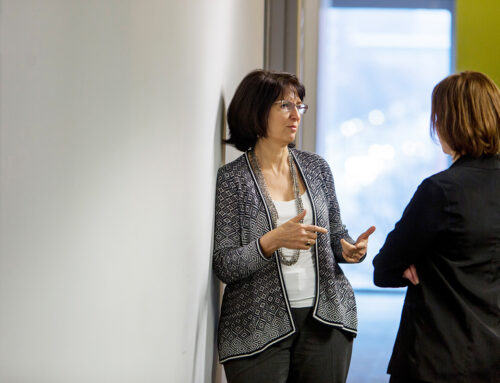Our History with Remote Technology
When 2020 first began, we never would have imagined in just a few short months, 100% of our staff would be consistently working from home. Thankfully, our IT team had previously been investigating remote technologies and our business continuity plan. Our long-term planning and strategic efforts had laid a solid groundwork for an office-wide quick switch to remote work.
Around five years ago, our IT team began researching options to make long-distance work possible. At that point, our remote capabilities were limited to a few 17” dell precision laptops as loaner computers, and we had only one employee who partially worked from home. The loaner laptops were primarily used in case one of the desktops went down as a temporary replacement while the desktop was repaired.
However, as our projects in the Airport market grew, we had more and more employees traveling. In 2014 with the introduction of the Surface Pro 3, a light, powerful option with sufficient battery life finally became readily available. It was a possible solution as a replacement for our office desktops. That year, we purchased two machines for testing. Now in 2020, 90% of our office uses Surface Pros as their primary work computer. The only computers we could not replace have been the high-powered machines used for visualization and rendering.
In addition to keeping up with emerging technologies, our IT team and Management have been working together on a continuously-evolving disaster recovery plan for several years. The plan features different strategies based around the idea of one day, one week, one month, or one year without access to the office. It includes procedures for where we would go, what supplies would be needed, as well as worst-case scenarios for if we lost the entire physical office. Even though we never anticipated a worldwide pandemic, we were able to swiftly develop an action plan by taking parts from the disaster recovery strategies already in place.
The Switch to Work From Home
Once news of the pandemic began making headlines in December and updates came about the spread to Europe in late January, our thought was that it was only a matter of time before America would be impacted. We began planning scenarios in which our physical office was shut down, but we could still operate. In addition to keeping the office connected, we had to ensure we could still properly work on projects with our clients and remain on schedule.
Areas of Focus
For solutions, we looked at three major strategies:
• VPN – Virtual Private Networks
• RDP – Remote Desktop Protocols
• Cloud Hosting
Problems and Solutions
Bandwidth limits – Mitigation and protocols set in place for our office were never designed for 100% of our staff to be working remotely. In turn, we looked at what the bandwidth requirement was for our office to try and function as we would in a typical day working off our server. Unfortunately, we discovered we would have needed a pipeline that was 16x greater than what we had. To upgrade was prohibitively expensive, required an annual contract, and could have taken as long as 90 days to install. We also learned that we did not have the hardware to make that big of a connection, even if we were to consider the upgrade.
To make sure we could still work with the limited pipeline, we implemented a couple of protocols to reduce bandwidth issues.
1. Shifts – The office was split into a morning and afternoon shift to spread the demand over a more extended day. The office is now open from 6 am to 7 pm.
2. File Management – It has always been company policy to work directly on files on our server, which is backed up daily. However, this requires a constant connection when working remotely. To mitigate this, we allowed staff to download the files to their local machines and work on them throughout the day. During non-peak hours, staff would upload files back to the server for continuity of our back-up.
3. Remote Desktops – For projects which required multiple users, we brought desktops out of retirement to act as proxies in our office. These machines are physically connected to our server. Employees can log into these machines and work remotely from their computers at home. The data that must be transmitted to foster this connection is exponentially smaller than transferring data between the home machine and the server.
4. Communication and Internal Collaboration – Part of our emergency planning aimed to reduce the amount of reliance we had on internal hosting and support. One of the major items we considered was email. In October, we decided to switch to remote hosting for all our office email accounts. Because of this switch, we were able to avoid the requirement to connect back to our office to get emails. Emails can now be checked wherever there is an internet connection.
5. Internal Files – Project file sharing and collaboration efforts are a requirement for our workflow, both internally among our staff and with our consultants. Working from home, we lost our ability to share physical files. To manage workflows with only digital files, we needed to be able to share them quickly and safely. To keep office bandwidth to a minimum, we used outside apps like WeTransfer, Dropbox, and other cloud storage programs to share files.
6. Collaboration – With our cloud upgrade for our email, we also unlocked the capabilities of Microsoft Teams. With this program, we can instant message our colleagues, hold phone and video conferencing, and share files.
7. Keeping in Touch – One of the essential items we wanted to maintain during our times of social distancing was our office culture. Using programs like Zoom and MS teams, we have been able to have virtual Happy Hours, Weekly Trivia Nights, as well as maintain our office-wide Town halls in a digital format. We can see each other and are still able to socialize, at least virtually.
What was planned initially as a two-week work from home has now extended to a multi-month work style change. As we expect this to continue in some form for the foreseeable future, we are continually looking to identify weak points in our current plans and innovate and upgrade as necessary.

Author
Wayne Chang, RA, AIA, NCARB
Partner





